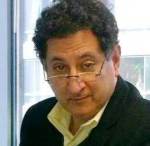Updated
Business Brief: Solar-powered Homes a Hit in Morocco while Plans for Natural Gas Processing Plant Move Ahead; Investments in Mega-projects Announced; Micro-funding Gets a Boost from the EBRD; and Government Finally Launches Flexible Exchange Rate – Jean R. AbiNader
Jean R. AbiNader, MATIC
January 18, 2018
Energy outlook for Morocco continues to show great progress as the International Renewable Energy Agency (IRENA) noted that around 128,000 homes are currently powered by off-grid solar home systems. Already more than 98% of the country has access to power, marking Morocco’s achievement of one of its Millennium Development Goals. This recent development, which is testament to Morocco’s ranking in the top three African countries for the adoption of solar technology, is a project of the office of national electricity (ONEE) with Masdar, an Abu-Dhabi based renewable energy company.
Abderrahim El Hafidi, acting director-general of ONEE, said: “The solar home system project will help us provide over 99% of our rural communities in Morocco with electricity. These remote, off-grid communities are often faced with challenging conditions in energy access, but this initiative is providing over 95,000 people with electricity through customized renewable energy solutions.” According to the article in ConstructionWeeklyOnline, the “project extends energy access to 19,438 homes in more than 1,000 rural villages in Morocco.”
As with all of its solar and wind renewable energy projects, Morocco relies on PPPs for financing and technology transfer. “Morocco is a showcase for progressive policies and regulations that enable the adoption of renewable energy, and for effective public-private cooperation,” Mohamed Jameel Al Ramahi, chief executive officer of Masdar, said. “This has paved the way for our partnership with ONEE to deliver the Morocco Solar Home Systems.”
With the discovery of commercial quantities of natural gas, it only makes sense for Morocco to call for bids for a natural gas processing facility. According to BloombergReuters, the government is set to issue a tender for a $4.6 billion natural gas project that will process gas for power and provide gas to industry. According to the Energy Minister Aziz Rabbah, the financial and technical consultants are already in place and will help shape the project to build an integrated gas-processing plant.
Still in limbo is the status of Samir, the country’s only oil refinery, which was closed due to bankruptcy and is still awaiting a court-approved buyer or other disposition of the facility.
Investment projects worth $3.5 billion were recently announced by the government in various sectors. Totaling some 48 projects, with a heavy concentration, nearly 59%, in the industrial sector, it is anticipated that more than 6,000 direct and 14,000 indirect jobs will be created. “Seawater desalination projects hold the second position with nearly 11 percent of the planned investments, while transport sector ranks third with 10 percent of investments.” It is anticipated that Morocco about 85% of the projects will be funded by Moroccan investors with international partnerships providing the rest.
Not to be left out, micro-finance gets a boost from the European Bank for Reconstruction and Development (EBRD) which is providing a loan of some $12 million to the Albaraka Foundation, one of the largest micro-finance institutions in Morocco that will enable it to support micro-, small-, and medium-sized enterprises (MSMEs) in having access to finance to grow and create jobs.
Mouatassim Belghazi, Founder and President of Albaraka, said: “We are pleased to count the EBRD as a financial partner. This partnership will enable us to continue our mission in financial inclusion and the promotion of income-generating activities in Morocco by providing financing tailored to the specific needs of micro entrepreneurs and small businesses.”
Morocco is a founding member of the EBRD. Since 2012, the Bank has invested over $2 billion in over 42 projects in the country. The Bank has also supported more than 340 Moroccan SMEs by providing business advisory services.
Flexible foreign exchange rate makes it debut as the Central Bank announces its launch. After more than six months since first promised, the Bank believes that it has created sufficient regulatory measures to prevent speculation and protect the country’s reserves. It does not anticipate any significant pressure on the dirham, the local currency, and will enable it to be more resilient in shifting economic conditions
“The new system, designed to keep exports competitive and protect Morocco’s foreign exchange reserves, widened the band in which the dirham can trade against hard currencies to 2.5 percent on either side of a reference price, from the previous 0.3 percent.”
The Reuters article noted that “Morocco has been working for years with a technical mission from the IMF to liberalize its currency, with both saying the move will be gradual and a total float will take years, depending on how the market reacts.” The country has enough foreign exchange reserves to allow a smooth transition and the bank is prepared to intervene as needed through regular auctions of the basket currencies (euro 60%, dollar 40%).
Jason Tuvey, Middle East economist for London-based Capital Economics, said the new system was a positive step. “Last year, it was delayed amid fears the currency could sharply depreciate. Those fears have dissipated over the past six to 12 months as foreign exchange reserves have continued to build and capital inflows have remained fairly strong.”
